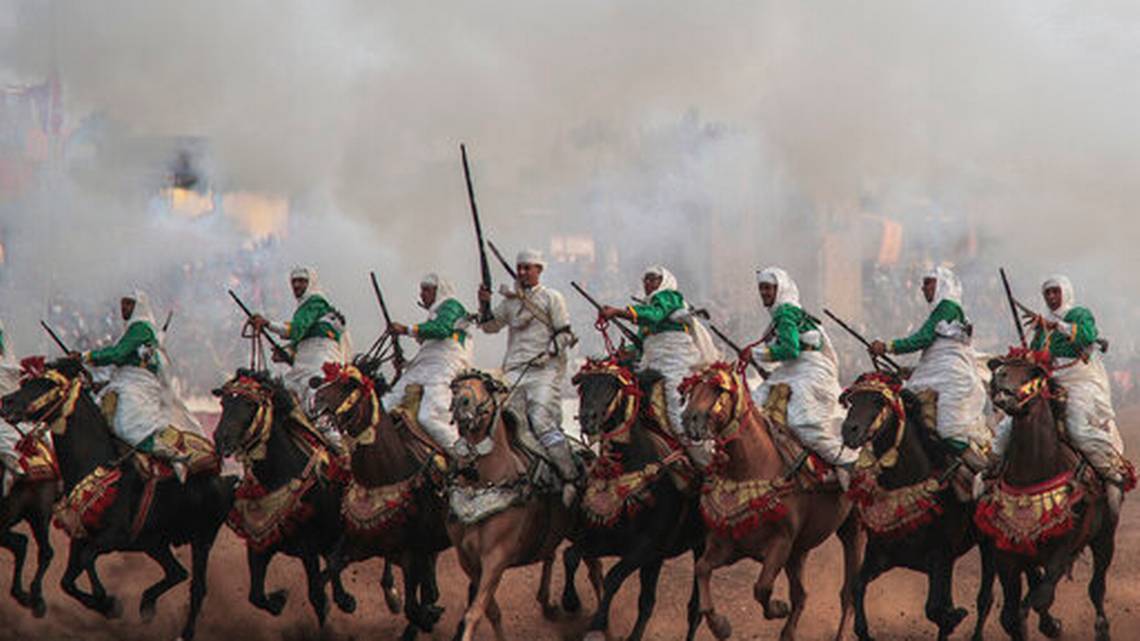AP PHOTOS
Bellingham Herald
AP
By Mosa’AB Elshamy
Thousands of visitors descend on the Moroccan coastal city of El Jadida each July to attend the largest equestrian show in the kingdom — a breathtaking horseback performance that combines synchronized riding with decorative guns.
The competitive event is known as Tabourida, or La’ab Al-Baroud, “The Game of Powder.” The display mimics and pays tribute to military parades performed by Arab and Berber tribes since the 15th century.
It has become an integral display for many festivals across Morocco and has developed into a cultural tradition, surviving time and change and practiced today by hundreds of troupes — young and old, men and, recently, women. Famed French artist Eugene Delacroix popularized Tabourida on canvas in the 19th century, dubbing it “Fantasia,” and the name has stuck.
Each troupe is led by a muqadim, a leader, usually the most experienced rider, who gives instructions and signals to keep the troupe working in synchronicity. The performance is judged by the enthusiasm of the crowd — the more synchronized the performance, the louder the cheers.
It also is an expensive and dangerous sport. Arabian or Berber horses of the highest stock can cost as much as 300,000 dirhams ($30,000). Inexperienced riders frequently fall, and troupes run the risk of hitting a barrier at the end of the track if they are unable to stop their horses in time.
Still, the spectacle continues. By the end of the day, there is barely an empty seat as the competition intensifies and the sun sinks into the Atlantic Ocean. Boys climb old ramparts to get a top view and families cheer for the local troupe.
A brief pause takes place as the call for sunset prayers is heard from the nearby minaret, and shortly after, a gallop — then a boom!












